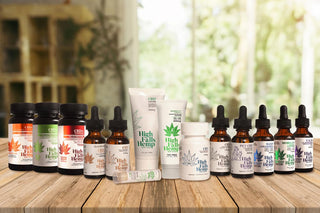HOW IT WORKS
50% wholesale discount for all our premium CBD products and exclusive retailer promotions to maximize your CBD offerings to your customers.
Comprehensive updates on the latest CBD news, regulations, the hottest new cannabinoids, and CBD education including our staff training guides.
Marketing support via our product brochures, educational countermats, and eye-catching POS displays.

The Original and Trusted NY CBD
The purity of nature in the Hudson Valley makes this the ideal place for cultivating the highest quality hemp. Our seed to soul philosophy is at the heart of our mission to craft the purest CBD-infused tinctures, gummies, softgels, and topical care products. We understand that your customers rely on our products to alleviate pains and to help them get from day to day. When you partner with HFHNY as your CBD provider, you know you are getting premium, thoroughly tested CBD products that are designed as intended.
